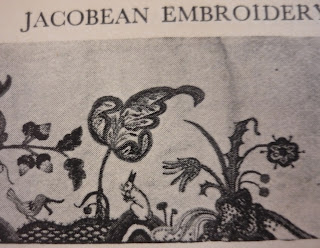
What with the rain just about making a come back to Manchester, this is an odd time to write my garden blog. However, nothing makes you stop gardening and start writing about it than rain.
There are a few easy mistakes to make with plants, and filling a blank space like a balcony or yard from scratch can be a little bit over-facing. But if you stick to a couple of rules and add a bit of yourself into the mix then you can end up with something beautiful that is completely your own.
I started by sowing some seeds. I got loads of seed packets early on in the year from
Aldi. Seeds are available most of the year from the B&Q website. Please make sure you check the back of the packet that you still have time to sow. If it's a little late then buy yourself a couple of young pots, or some plug plants. The Manchester spring market in St Ann's Square is a great place to start.
Other options are the internet;
the b & q website , and
Gardener's World should have some good links if you think your info is lacking.
Plant pots
To sow, first you need some planters. You can use anything that will hold enough water and some soil. I went on a bit of a hunt in my mums attic and found a couple of things to do this with. The best of the bunch was a red bucket from the beach and an old basket my cousin gave to me a long time ago. For the red bucket I hammered three holes in the bottom for drainage. The basket I lined with an old compost bag and put some holes in the liner.

I also stole loads of pots off my mum, if you have a family member who is a keen gardener then they should already have a mass of plant pots in the shed. To make these a little more exciting I stole an idea form a gardening book. I found some old paint in the garage and decided to have a go. I went with the colours I could find but they all seemed to match up quite well. Using the colours in blocks and contrast seemed quite effective.


Sowing seeds
Very basic this one, just follow the instructions on the packet for they know best. If you've only got a small space then sow about twice as many seeds as you'll need because only about half will survive the seed process.
Score a groove in the soil to the depth required
and sprinkle the seeds from about 20cm away thus insuring the seeds are evenly spread. Remember to cover the seedlings in cling film and keep them indoors until they germinate (begin to grow stems and leaves).
Once the plants have grown their true leaves you need to move them into larger pots. The true leaves of a plant are usually different to the leaves of the original seedling. These are usually round and flattish, so when new ones appear that are slightly different these are the true leaves. Remember to water everything really thoroughly once its planted, seeds or plants alike both need loads of water when first planted.
So you should now have quite a few plants that need re-potting into planters. If you are planting in a large pot then try and think about the height and size of your finished plant. You don't want tiny flowers to be hidden by massive leaves and you don't want your tallest plants at the front of the container so they fall down. Very simple but I usually forget this part and have to replant everything again. Well worth giving it a bit of thought. For example, climbers should go at the back of your container so that you can push them up against a wall to train them on.
Knitted Climber

For this I came up with the knitted climber. I started with some very large 20mm needles and some white piping cord. I deliberated for ages over what wouldn't rot in the very rainy Manchester and therefore started with polyester piping cord. However, I soon realised I was using up all my piping cord and that acrylic wool would be just as hardy. I cast on about 16 stitches and then just knit as many rows as it took to get as tall as I wanted.
Labels

These can be quite important especially if you're just starting out. Helping you remember when they've grown what the plant is and how to look after it. I first made some labels out of some card with some pens. Obviously these labels then melted when I watered the plants. Here's a much more permanent version.

I used an old Cath Kidston plastic make up bag that I chopped up into small rectangles. I used some permanent gold and white pens to write the name of the plant on the label. I then punched a hole in the label and using pieces of wool I tied it to my plants.


The End
And this is the finished product so far. I'll keep you updated as it grows, but I'm quite pleased with the results so far. Although I think I started my tomatoes a bit late because they are still tiny. Never mind.
Also, please ignore my neighbours drying sheets.
I am truly a novice at gardening and am quite proud of what I have achieved. But if you think there's something I've missed or there's something interesting you've done with your own garden, please let me know.





























